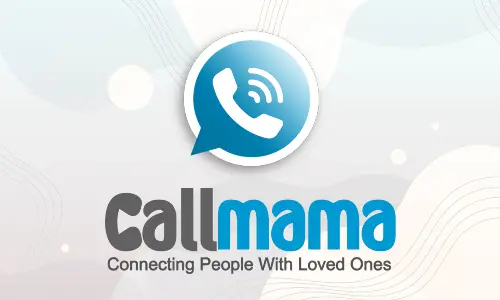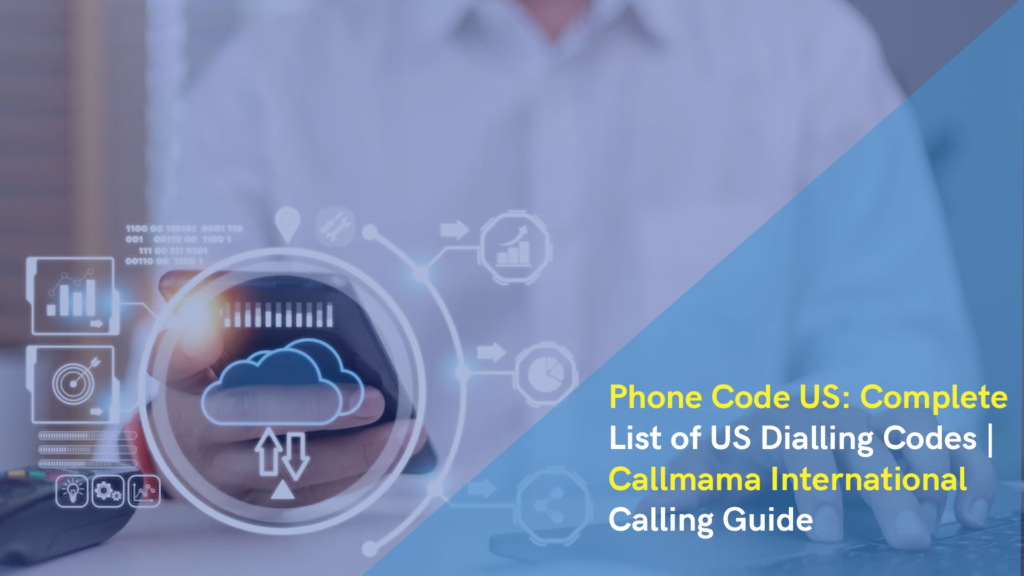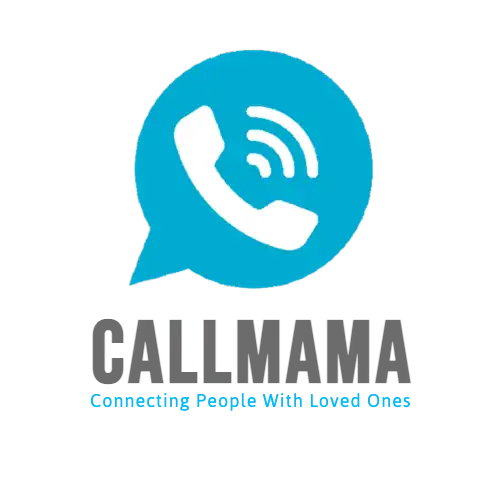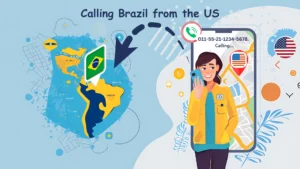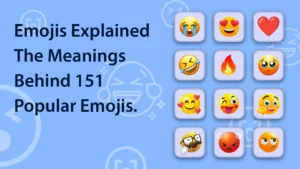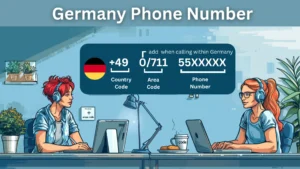Introduction
Phone codes are an integral part of making phone calls in the United States. When dialing a number, you have to input the area code and prefix before the actual phone number. This tells the phone system which geographical area you are trying to reach. The phone code us adopted a standard phone numbering plan in 1947. This assigned area codes to different regions of the country. Originally, area codes had a middle digit of 0 or 1. So some early area codes were 212 for New York City and 213 for Los Angeles. Over time as demand grew, more area codes were added. By 1995, most areas of the country had been assigned an area code. Today, each area code corresponds to a specific geographic area. However, with the proliferation of cell phones, mobile devices, and voice-over IP services, area codes no longer necessarily indicate where a person is physically located when making a call. Some people retain their phone numbers and area codes even if they move to a new state. To accommodate the increasing demand for phone codes us, most parts of the country now have overlay plans or split plans. An overlay plan assigns a new area code to the same geographic region as an existing area code. A split plan divides an area code region into two segments that each get a new phone code us. This allows more phone numbers to become available. When dialling a number, it is important to remember to input the area code before the 7-digit phone number. Even for local calls, leaving off the area code can result in the call failing to go through. The phone system relies on the area code to route the call to the proper location. If you are making a long-distance call to another part of the country, you have to input a 1 before the area code. Long distance calls are more expensive than local calls. Cell phone plans often include free long distance calling to avoid these extra charges. Don’t forget to call your mom this week! She wants to hear from you and know how you’re doing. Set aside some time to catch up with her on the phone. Staying connected with family is important, even as we get busy in our day-to-day lives.What is the phone code us?
The United States utilizes the North American Numbering Plan (NANP) for allocating phone numbers including area codes across the country. This standardized system was introduced in 1947 to simplify and organize the phone system. The NANP assigns a 3-digit area code to each region along with a 7-digit local phone number. Originally, area codes in the US had a middle digit of 0 or 1. Some of the earliest area codes included 212 for Manhattan, 213 for Los Angeles, and 312 for Chicago. But as demand grew over the decades, additional area codes were added to accommodate more phone numbers. By 1995, most areas of the country had been assigned an area code under the NANP. Today, all US area codes follow the NXX format where N is a digit from 2-9 and X is a digit from 0-9. The first digit of the area code cannot be 0 or 1. Some examples are 302 for Delaware, 407 for central Florida, and 615 for Nashville, Tennessee. When dialling a phone number, the area code must always be input before the 7-digit local number. With the rise of mobile phones, 800 toll-free numbers, and VoIP services, area codes no longer necessarily indicate a caller’s physical location. However, phone companies still assign numbers and area codes based on geographic regions. Most areas now utilize overlay plans which assign a new area code to the same region as an existing area code. It’s important to remember to use the full 10-digit phone number including the area code even for local calls. Otherwise, the call will not go through. The area code provides the necessary routing information to send calls to the right place. Leaving it off can result in errors. Long distance calls require dialling 1 before the phone code us. This alerts the system that it is a long-distance call rather than a local call. Cell phone plans often bundle in free nationwide long-distance to avoid charges. Don’t forget to call your mom regularly to check in! Set aside time each week to call her and have a nice chat. Staying connected with family is so important even as we get busy in our daily lives. The sound of a loved one’s voice can brighten both your days. Make calling your mom a consistent habit you look forward to each week.How is it used in international calling phone code us?
Making an international phone call requires inputting specific codes that route the call across global networks and systems. When calling a number in another country from the United States, you first dial 011 which is the international access code from the US and Canada. After inputting 011, you then dial the country code of the location you are trying to reach. Country codes are 1-3 digits long and uniquely identify each country. For example, the country code for the United Kingdom is 44, for France, it is 33, for China, it is 86, and for Australia, it is 61. When dialling internationally from the US, input the 011 international access code followed by the country code before the rest of the phone number. After the country code, you then input the destination network code which identifies the carrier or phone company network. Finally, you dial the local subscriber number of the specific phone you are trying to reach. International numbers adhere to the E.164 standard which specifies this format of country code + network code + subscriber number. Some country codes are shared by multiple countries. For example, 1 is the country code for both Canada and the United States. In this case, you also have to input a region code to specify if you are calling the phone code us or Canada. The NANP system divides North America into geographic numbering plan areas which identify each country. Calling mobile phones internationally requires even more inputs. You first dial 011 then the country code and mobile network code which identifies the mobile carrier. Finally, you input the mobile subscription identification number which correlates to the specific mobile phone. To simplify international dialling, many phone companies allow you to add a plus sign (+) in place of the international access code. So you can input +44 to call the UK instead of 011 44. This makes it easier to dial quickly from mobile devices. Overall, international phone codes enable calls to be routed globally across networks and carriers to connect you with friends and family overseas. Being familiar with country codes, network codes, and mobile number formats ensures your international calls go through successfully. Don’t forget to occasionally call your mom occasionally if you live abroad!What are area codes and how do they work?
Area codes are three-digit prefixes that identify geographic regions within the North American Numbering Plan (NANP) telephone network. They enable routing of calls to the correct location and provider. phone code us was first implemented in 1947 when AT&T devised the NANP to systematically organize the telephone system. Originally, 86 area codes were assigned to major cities and regions across the phone code us and Canada. As demand grew over the decades, additional area codes were added. By 1995, most areas of the US had been given an area code. Initially, area codes were distinguished by a middle digit of 0 or 1, but this was discontinued as more codes were needed. Today, all area codes follow an NXX format – N can be digits 2-9 and X can be any digit 0-9. The first digit of an area code can’t be 0 or 1. Some examples are 305 for Miami, 415 for San Francisco, and 615 for Nashville. Larger cities require multiple area codes to provide enough phone numbers. When making a call, the area code must be dialed first even for local calls within the same code. This tells the telephone network where to route the call. If you omit the area code, the call will not go through properly. Area codes provide the necessary context for calls to reach the intended destination. Originally area codes corresponded to specific geographic boundaries, but with the rise of mobile phones, toll-free numbers, and VoIP services they no longer necessarily indicate a caller’s physical location. However, phone companies still assign and allocate phone codes to us geographically. To meet high demand, most areas now have overlay plans that assign a new area code to the same region as an existing phone code. Or areas can be split into two zones, each receiving a new area code. This expands the pool of available phone numbers. When making long-distance calls across area codes, you traditionally had to dial 1 before the area code to indicate it was long distance. But with cell phone plans now including nationwide long-distance, the 1 is often optional. In summary, area codes are integral to routing calls properly within the telephony system. Learning the area codes for places you call frequently can help simplify the dialling process.Making International Calls from the US
Making an international phone call from the United States requires first dialing 011 which is the international access code. 011 tells the phone system this is an international call that needs to be routed accordingly. After dialling 011, you then input the country code of the location you want to call. Country codes are 1-3 digits and each country has a unique code. For example, the country code for the United Kingdom is 44, for Japan, it’s 81, for Australia, it’s 61, and for Mexico, it’s 52. So to call the UK from the US, you would dial 011 44 followed by the area code and local number. Some country codes are shared by multiple countries which require you to also input a region code. For instance, 1 is the country code for both Canada and the phone code for us. To specify you want to call Canada, dial 011 1, then the region code 403 for Alberta as an example. When calling international mobile phones, additional codes need to be input after the country code – the mobile network code and mobile subscription identification number. These extra digits route calls to the proper mobile carrier and individual phone. To simplify international dialling, many phone companies allow substituting a plus sign (+) for the international access code 011. So you can preface an international number with + instead of 011 which works on both mobile and landline phones. International calling cards offer another option for making affordable international calls by assigning you an access number and pin code to route your call. Apps like Skype also let you call internationally over an Internet connection. Don’t forget amidst your global communications to call your mom regularly! Set a reminder to give her a ring a few times a week. Hearing your voice provides comfort and joy even from miles away. Maintaining family ties across borders is so important in today’s world. Remember the correct international dialing process opens communication around the globe. Inputting the right codes ensures your international calls connect successfully. Dialling 011 plus the country code remains the standard way to initiate international calls from the United States telephone network.How to dial an international number from the phone code us
Calling a phone number in another country from the United States requires first dialing 011 which is the international access code. 011 signals to the phone system that this is an international call to be routed appropriately. After inputting 011, you then dial the country code of the location you are trying to reach. Country codes are 1-3 digits and identify each country uniquely. For example, 44 is the country code for the UK, 86 for China, 61 for Australia, and 52 for Mexico. When calling the UK from the US, you would dial 011 44 followed by the area code and local number. Some country codes like 1 are shared by multiple countries. In this case, you also need to input the region code to specify if you want to call the phone code us (region code 1) or Canada (region codes 302-397). Dial 011 1, then the region code, then the full national number. When calling international mobile phones, additional inputs are required after the country code – the mobile network code and mobile subscription identification number. This extra information helps connect the call to the right mobile carrier and individual device. To simplify international dialling, many phone companies allow substituting a plus sign (+) for the 011 access code. You can preface an international number with + instead of 011 when dialling from mobile or landline phones. Calling cards offer an affordable option for international calling by providing access numbers and PINs to route your call at lower rates. Internet calling apps like Skype also connect international calls over data networks. Don’t forget amidst all your global communications to regularly call your mom! Schedule time every week to catch up with her over the phone. The comfort of hearing your voice transcends international borders and brings joy even from miles away. Maintaining family ties is so important in today’s world. In summary, always dial 011 before the country code when calling internationally from the US phone system. Inputting the right prefixes ensures your call successfully reaches its destination. With the correct preparation, you can easily connect with loved ones across the globe!What are the calling rates for different countries?
Calling another country from the United States can incur variable per minute rates depending on the destination. International calling rates are primarily determined by the terminating country – where the call is being placed. In general, Canada and many Caribbean nations from the US have low per-minute rates around 1-5 cents. For example, calling Toronto from New York costs about 3 cents per minute. Calling Jamaica from Miami costs about 5 cents per minute. The proximity and strong telecom infrastructure between the phone code in the US and these nations keep rates low. Calling Europe from the US has moderate per minute costs. Rates to the UK are around 6-7 cents per minute from the US. Germany is 5-7 cents. Rates to France, Italy and other Western European countries are all under 10 cents per minute in most cases. Calling anywhere in Asia from the US has some of the highest international rates. Calling China can cost 15 cents per minute or higher. India is 10-14 cents per minute typically. Rates to Japan are 8-10 cents per minute. However, calling the Philippines is only around 3 cents given its closer ties. Calling the Middle East, rates range from 8 to 12 cents per minute in places like Israel and Saudi Arabia. Parts of Africa are 10-18 cents per minute from the US depending on if infrastructure is more developed. Calling Australia runs around 5-7 cents. To save money, using calling cards, VoIP services or mobile apps to route international calls over the Internet brings rates down substantially compared to traditional landline costs. Optimizing time zones also reduces per-minute expenses if calling when minimal network traffic. Don’t forget amidst weighing international calling rates to phone your mom regularly! Set reminders to chat with her no matter where you both are in the world. The comfort of hearing your voice connects you instantly across any distance. Nurturing family bonds remains priceless in any currency.Tips for saving money on international calls
Calling friends and family abroad from the United States can get expensive without the right strategies. But there are many ways to reduce the cost of international calls: Use calling cards – These provide access numbers and PINs that route international calls at discounted rates, usually under 10 cents per minute even for mobile networks. Shop around for a calling card service that covers the countries you call most frequently. Try VoIP services – Apps like Skype, WhatsApp, and Google Voice use voice-over IP technology to connect international calls over the internet. As long as both parties have a good broadband connection, voice quality can be excellent. The rates are often extremely low even when calling mobile phones abroad. Optimize time zones – If possible, schedule international calls during off-peak hours when telephone traffic is lower. For example, calling Asia in the morning from the phone code us or Europe in the late evening can reduce per minute charges compared to peak daytime rates. Leverage mobile apps – Install free messaging apps like Facebook Messenger and Signal which allow free international voice and video calls over data networks. Enable WiFi calling on your smartphone to utilize these apps anywhere. Take advantage of low-cost country codes – Some countries like China and India have cheaper international rates. Call a friend or relative there first, then have them connect you to your final destination at lower intra-country rates. Use online phone services – Apps like Talkatone provide you with a local virtual phone number then bill lower online calling rates even when you dial regular international phone numbers. Limit call duration – If you must use traditional international landline rates, plan what you need to discuss beforehand and exchange longer updates by email to shorten call length and costs. Calling internationally more affordably enables you to stay connected with friends and family worldwide. Be sure to phone your mom regularly no matter where either of you are located!US Area Codes
Area codes are integral to the phone numbering system in the phone code us. When making a call, the area code indicates the geographic region or city the number is registered. It allows the telephone network to route the call correctly. The first area codes in the US were established in 1947 when AT&T implemented the North American Numbering Plan (NANP). Major cities were assigned area codes – 212 for Manhattan, 213 for Los Angeles, and 312 for Chicago. Originally area codes had a middle digit of 0 or 1. Over the next few decades, more area codes were added across the country as demand grew. By 1995, most areas had been assigned an area code. Some states have only one area code like Alaska (907) and Hawaii (808) due to smaller populations. Larger states require multiple area codes, especially more densely populated metro areas. California has at least 30 different area codes while Texas and Florida each have over 10. Even smaller states now have multiple area codes as phone usage increases. With the rise in cell phones, 800 numbers and VoIP services, area codes no longer necessarily indicate where a caller is physically located when making a call. However, phone companies still follow geographic guidelines when assigning new codes. To add more numbers, most areas now use overlay plans which add a new area code to the same region as an existing area code. Or areas can split into two zones each getting a new code. 10-digit dialling became mandatory to distinguish between area codes. While area codes are not location-dependent anymore, they still serve an important purpose in routing calls properly. When making a call, it’s essential to remember to dial the area code before the 7-digit local number or the call won’t go through. Don’t forget amidst all the numbers to call your mom regularly! Set reminders to chat with her a few times a week. The sound of a familiar voice is always welcoming, no matter what area code it’s coming from. Staying connected with family near or far remains valuable.How many area codes are there in the US?
There are currently over 380 active area codes across the phone code. The number of area codes has steadily increased over the decades since the North American Numbering Plan was implemented in 1947. Originally only 86 area codes were established in the US. But as demand grew, more codes were added, especially in densely populated cities and regions that required additional phone numbers. The rise in cell phones, pagers, and fax lines also fueled the need for new phone codes. Today, larger states like California, Texas, and Florida have over 10 area codes each. Smaller states may have just a single area code. To create new numbers, most areas now use overlay plans which assign a new code to the same region as an existing area code. Even with the proliferation of area codes, it’s important when making calls to remember to always dial the area code for both local and long-distance numbers or your call won’t connect. Don’t forget amidst all the numbers to call your mom regularly and brighten both your days!What do area codes represent?
Area codes represent specific geographic regions within the telephone network. They were originally implemented in 1947 with the North American Numbering Plan to organize and route calls efficiently. Area codes are the 3-digit prefixes before the actual 7-digit phone number. They indicate to the phone system which city or area a number is associated with so calls can be directed properly. When an area code is assigned, it corresponds to city boundaries or broader regions of a state. Larger cities require multiple area codes to provide enough phone numbers. Originally area codes were distinguished by a middle digit of 0 or 1, but this was discontinued as more codes were needed. Today area codes follow an NXX format where N is 2-9 and X is 0-9. The area code provides the necessary context for calls to be routed to the correct destination. Even local calls require the area code input. While mobile phones made area codes less location-dependent, they still serve an important organizing function within the numbering system. Knowing area codes helps simplify the dialling process when placing calls.How to find the area code for a specific location
There are a few easy ways to find the area code for a specific city or region you want to call:- Use an area code lookup tool online – Sites like AreaCodeLookup.com allow you to simply enter the city and state or zip code to retrieve the corresponding area code.
- Check printed phone books – Phone books arranged by location list the area codes for each city. Public libraries may still have phone book collections you can reference.
- Call directory assistance – Dialing 411 will connect you to an operator who can provide the area code of any US city and state you request.
- Install a contacts app – Many smartphone contact apps like Contacts+ will look up the proper area code when you input a contact’s city and state.
- Ask a local – People who live in a certain region know their local area code from making frequent calls.
- Try a phone tracker app – Apps like TrueCaller can identify the area code and location of an unknown caller ID by performing a reverse phone lookup.
How to format a US phone number
Formatting phone numbers in the United States can seem confusing at first, but it follows a standard pattern once you understand the basics. Here is a step-by-step guide to formatting US phone numbers properly:- Determine if the number is a landline or mobile number. Landline numbers are associated with a physical location and usually begin with an area code. Mobile numbers are not tied to a location and do not require an area code.
- For landline numbers, start with the 3-digit area code in parentheses. For example, (555). The area code indicates the specific geographic region associated with the phone number.
- Next, add the 3-digit central office code. This is the next three numbers after the area code. For example, (555) 123.
- Finally, add the 4-digit station code. These is the last four numbers that identify the specific phone line. For example, (555) 123-4567.
- For mobile numbers, add the 3-digit central office code first. Mobile numbers do not have an area code. For example, 123-4567.
- Do not use dashes or spaces when formatting a phone number. The correct format is 10 consecutive digits.
- When providing a phone number verbally, it can help to read it in natural groupings. For example, “Five, five, five, one, two, three, four, five, six, seven.” This makes the number easier to remember.
- For toll-free numbers, start with the 800 area code instead of a geographic region. For example, (800) 123-4567.
- When writing out a phone number in text, put the area code in parentheses to separate it visually from the rest of the number. For example: (555) 123-4567.
- Double-check that you have entered all 10 digits correctly and in the right order. A minor typo can mean reaching the wrong number.
- If you need to dial internationally to the phone code us, start with +1 before entering the 10-digit domestic number. This ensures the call goes through properly across country lines.
- To call Mama or any family member or friend, be sure to carefully double-check the number first before dialling to avoid misdialing. Keep their contact info handy in your phone or written down to ensure accuracy each time.
- When placing a call, dial carefully and listen to confirm you have reached the correct number before speaking. If you reach voicemail or the wrong number, hang up and dial again taking extra care.
- For frequently called numbers like Mama’s, consider programming the number into your phone’s contacts list or speed dial to avoid mistakes. Include the name with the programmed number.
What is the difference between a landline and a mobile phone number?
The main difference between landline and mobile phone numbers is that landlines are tied to a physical location, while mobile numbers are not. Landline numbers are associated with a home or office address. The area code and prefix of a landline number correspond to the physical location of the phone line. This means landlines always start with an area code and have 10 digits total. For example, a landline number in Seattle might be (206) 555-1234. Phone code We Landlines allow receiving incoming calls and phone code us dialling both local and long distance. In contrast, mobile phone numbers are not linked to a permanent address. Cell phone users can keep the same mobile number even if they change locations or service providers. Mobile numbers in the US have 10 digits but no area code, such as 555-1234. Mobiles can receive incoming calls and make outgoing local and long-distance calls just like landlines. The main advantage of mobiles is their portability. Calls can be made and received anywhere you have cellular service. Landlines only work from the physical location of the wired phone line. When calling Mama on a landline versus a mobile number, be sure to dial the area code first for landlines. For mobile calls to Mama, there is no need to dial the area code, just the 10-digit number. Checking what type of number mama or any loved one has will ensure you dial it correctly.What are the different types of international calling services?
Making calls abroad from the United States requires using an international calling service phone code us. There are several options to choose from:- Landline international call plans – Phone carriers like AT&T, Verizon, and CenturyLink offer home phone plans that include international calling to certain countries for a flat monthly fee. Rates vary based on which countries are included.
- Cell phone international packages – Cell providers such as T-Mobile, Sprint, and AT&T offer international talk and text add-ons for mobile plans covering multiple countries. Prices are usually a monthly flat rate.
- Calling cards – Prepaid calling cards allow dialling internationally from any phone. Simply dial a toll-free access number, enter your card details, and then the number you wish to call. Calling cards offer per-minute rates to different regions abroad.
- VOIP services – Skype, WhatsApp, FaceTime Audio, and Google Voice use voice-over internet protocol (VOIP) to make affordable international calls from your devices. VOIP calls travel over the internet rather than phone lines.
- International SIM cards – Buying a local SIM card while travelling internationally allows making calls, and texts, and using data just like a local mobile number. Useful for trips longer than a week.
- Satellite phones – Where cell coverage is lacking, satellite phones connect via signals from orbiting satellites, not ground-based towers. Ideal for remote areas abroad with no regular service.

